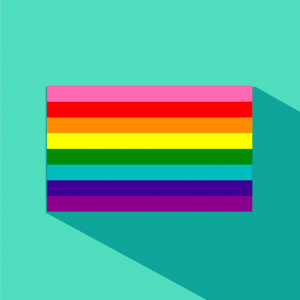Historical & Current Events dictionary
LGBTQ History Month
[ el jee bee tee kyoo his-tuh-ree muhnth ]
What is LGBTQ History Month?
LGBTQ History Month is a month-long observance dedicated to education, celebration, and awareness of the history, achievements, and impact of individuals who identify in these ways and their communities.
The term LGBTQ is a term that collectively represents people who identify as lesbian, gay, bisexual, transgender, or queer (or those questioning their gender identity or sexuality). There are many variations of the abbreviation (such as LGBTQ+ and LGBTQIA) intended to represent those who identify in different ways (such as intersex, asexual, pansexual, intergender, aromantic, nonbinary, and two-spirit, among many other nonheteronormative identities that have traditionally been marginalized and discriminated against). LGBTQ History Month is typically considered to encompass all such identities.
LGBTQ History Month is different from Pride Month (sometimes called LGTBQ Pride Month), which is celebrated in June. Both observances celebrate people who identify in these ways, but LGBTQ History Month is more specifically focused on education about LGBTQ history.
When is LGBTQ History Month?
In the US and some other places, LGBTQ History Month is observed each year in October. In the UK and some other places, it is observed in February.
Where does LGBTQ History Month come from?

The observance that became LGBTQ History Month was first proposed by teacher Rodney Wilson in 1994. That year, a number of schools and educational institutions officially established the event, which was then known as LGBT History Month. In 1995, it was adopted as an official observance by the General Assembly of the National Education Association.
October was chosen as LGBTQ History Month due to the holiday known as National Coming Out Day being on October 11 (a date that commemorates the anniversary of a major march in Washington, D.C., for gay and lesbian rights).
Examples of LGBTQ History Month
Who uses LGBTQ History Month?
Did you know … ?
- High school teacher Rodney Wilson, who is credited with working to establish LGBTQ History Month, is thought to have become the first openly gay K–12 teacher in Missouri in 1994.
What are other words used in discussion of LGBTQ History Month?
- LGBTQ
- National Coming Out Day
- Pride Month
- lesbian
- gay
- bisexual
- transgender
- queer
- nonbinary
- genderqueer
For other terms, see our Gender and Sexuality Dictionary.
Note
This is not meant to be a formal definition of LGBTQ History Month like most terms we define on Dictionary.com, but is rather an informal word summary that hopefully touches upon the key aspects of the meaning and usage of LGBTQ History Month that will help our users expand their word mastery.